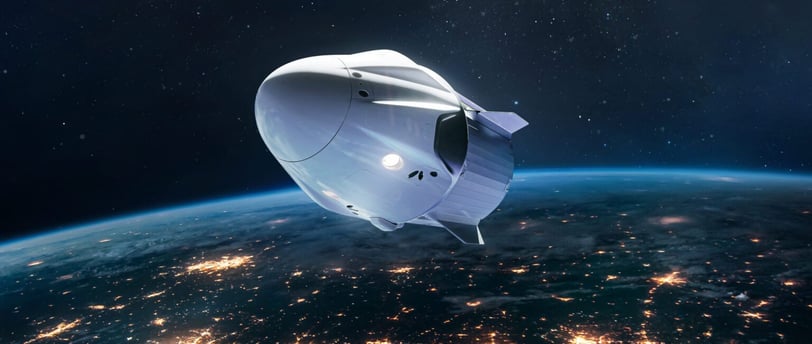Future Innovations in Aerospace Engineering?
A discussion of various ideas that could potentially change the future of aerospace engineering


Aerospace engineering is on the brink of transformative change, with several emerging ideas that could redefine the industry. Here, we explore six groundbreaking concepts that have the potential to shape the future of aerospace engineering.
1. Hypersonic Travel
Hypersonic travel involves aircraft that can reach speeds greater than Mach 5, or five times the speed of sound. Imagine cutting transcontinental flight times from hours to mere minutes. While hypersonic technology is still in its early stages, advancements in materials, propulsion systems, and aerodynamics are key to overcoming the extreme temperatures and stresses associated with such speeds. Successful implementation could revolutionize global travel and open up new possibilities for rapid transportation.
2. Sustainable Aviation
With growing environmental concerns, the aerospace industry is under pressure to reduce its carbon footprint. Sustainable aviation focuses on developing technologies that minimize environmental impact, such as alternative fuels (e.g., biofuels and hydrogen) and electric or hybrid-electric propulsion systems. Improved aircraft designs aimed at reducing drag and enhancing fuel efficiency are also pivotal. The ultimate goal is carbon-neutral aviation, a shift that could significantly mitigate the industry’s environmental impact.
3. Urban Air Mobility (UAM)
Urban Air Mobility (UAM) envisions a future where flying taxis and personal air vehicles are common in urban environments. These vertical takeoff and landing (VTOL) aircraft could alleviate traffic congestion, shorten travel times, and transform urban transportation. UAM vehicles are expected to be electric and autonomous, offering a sustainable and efficient solution to the challenges of urban mobility. As cities grow and technology advances, UAM could become an integral part of modern transportation networks.
4. Space Tourism
Space tourism, once a distant dream, is becoming a reality. Companies like SpaceX, Blue Origin, and Virgin Galactic are leading the charge in commercial space travel, offering suborbital and orbital flights to private individuals. As technology advances and costs decrease, space tourism could expand to include space hotels and even lunar or Martian colonies. This emerging industry not only offers a new frontier for tourism but also drives further innovation in spacecraft design and propulsion.
5. Artificial Intelligence (AI) and Autonomous Systems
AI is rapidly transforming aerospace engineering by optimizing flight paths, enabling autonomous aircraft, and improving safety. AI can reduce pilot workload, manage air traffic more efficiently, and even predict maintenance needs. As AI technology advances, the potential for fully autonomous commercial flights could become a reality, reshaping the aviation industry and reducing operational costs. The integration of AI in aerospace engineering promises to enhance safety, efficiency, and reliability.
6. Advanced Propulsion Systems
The quest for more efficient propulsion systems is central to the future of aerospace engineering. Traditional fossil fuel-based engines may eventually give way to advanced technologies like nuclear propulsion, which could enable faster and more efficient space travel. Ion thrusters and solar sails are also promising alternatives for deep-space exploration. These advanced propulsion systems could unlock new possibilities for interplanetary travel and extend humanity’s reach across the solar system.
The future of aerospace engineering is rich with potential, driven by innovative ideas that challenge current limits. Hypersonic travel, sustainable aviation, urban air mobility, space tourism, AI, and advanced propulsion systems are just a few of the concepts poised to reshape the industry. As these ideas evolve, they will pave the way for new possibilities in both air and space, setting the stage for the next era of exploration and innovation.
